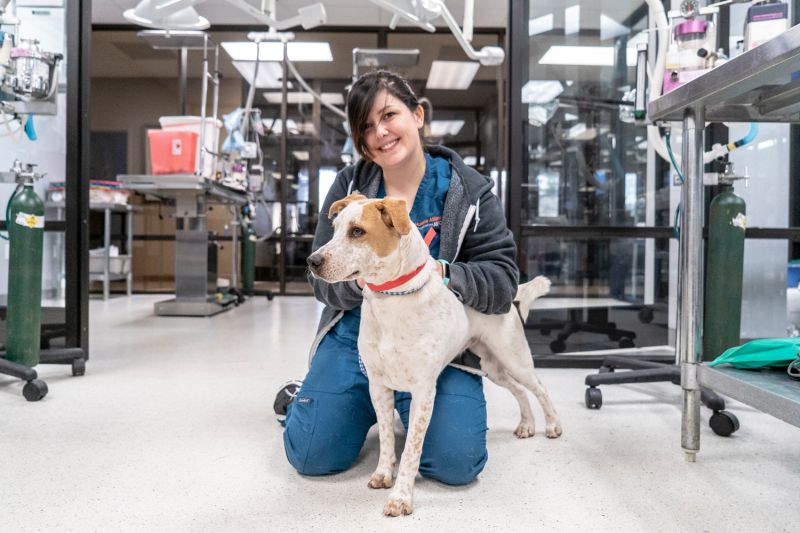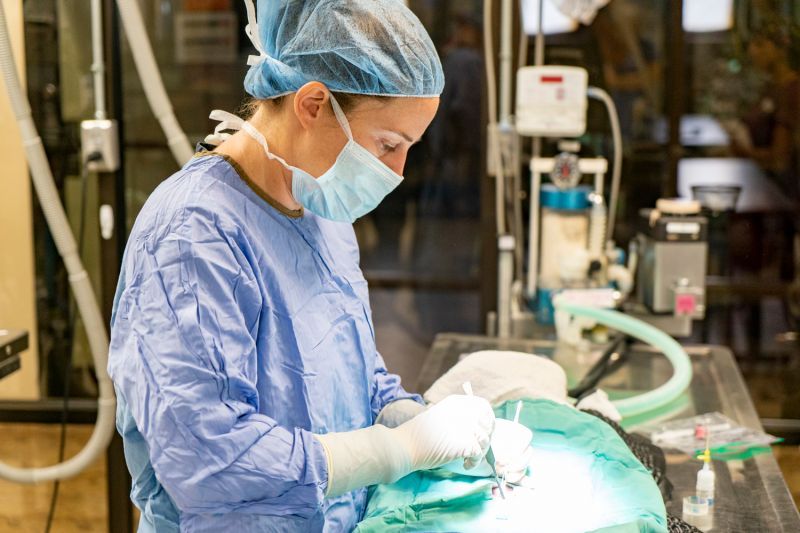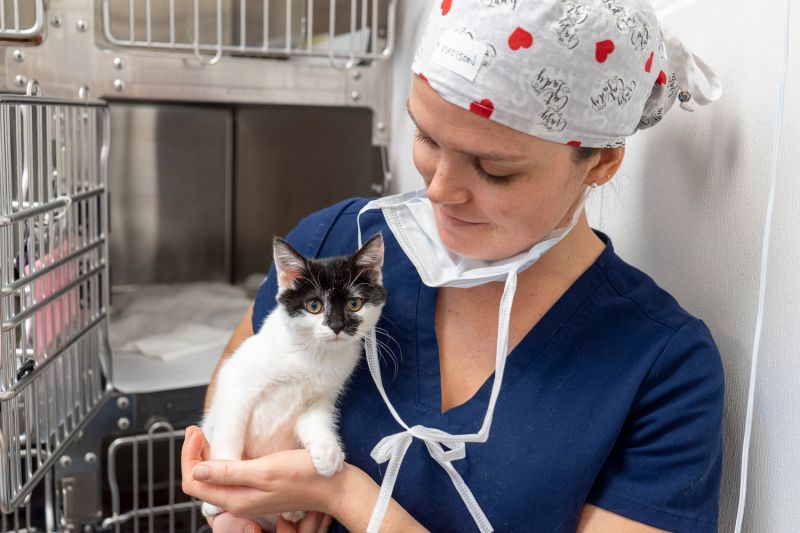High volume, high quality, high impact
Celebrate World Spay Day with these best practices for spay/neuter clinics
February 24, 2020

Every February, animal welfare professionals across the country celebrate what we know to be one of the most effective methods to combat animal homelessness and reduce shelter intake—spaying and neutering pets. In honor of World Spay Day and National Spay/Neuter Awareness Month, our team at the ASPCA Spay/Neuter Alliance would like to highlight three key areas that can help clinics advance the practice of spay/neuter in their own communities, ultimately saving more time, money and animal lives.
- Practice gentle handling to reduce stress: A hallmark of good clinic flow is to handle the animals as few times as possible. Make sure your veterinarian is on site when animals arrive—especially dogs—so the animals can be given their pre-surgical exam and pre-medications before being put in their holding kennel. All staff should also be trained in low-stress handling, which will improve your patients’ experience, minimize the risk of bites and save time by decreasing interactions with fractious patients. Watch our videos on safe, gentle animal handling in a spay/neuter clinic setting.
- Incorporate good organization to improve efficiency: Another key aspect of good clinic flow is to make sure your lobby is stocked with all the supplies you need for morning check-ins, such as owner consent forms and other paperwork, extra carriers or humane traps, towels to safely and securely carry smaller dogs, and cleaning supplies for the inevitable accidents. Find more tips for improving clinic efficiency in our “Tips & Tools for an Efficient Spay/Neuter Clinic.”
- Keep onboarding and training consistent: To ensure clinic staff are following the same protocols, it’s helpful to use the same onboarding checklists and training materials for all new hires. Visit our “Training Materials for Spay/Neuter Clinic Staff” web page for sample job descriptions, checklists, and knowledge or skills tests.

For even more tips and tools to enhance your practice, visit aspcapro.org, and check out ASNA’s strategic training program, which teaches animal welfare professionals how to open, run and sustain high-quality, high-volume spay/neuter clinics. More than 180 clinics from 41 states have trained at our facility in Asheville, North Carolina, and more than 1,200 veterinarians and clinic professionals have learned how to make high-volume, high-quality spay/neuter services a reality in their communities.
We recently reached a significant milestone: A total of 10 million cats and dogs have been spayed or neutered through our National Spay/Neuter Response Team mentorship program since its inception 15 years ago.
Our mentored clinics sterilize more than 1 million cats and dogs each year, and that number is growing. They each played a significant role in reaching this milestone by prioritizing access to affordable spay/neuter surgeries in their communities—saving at-risk animals and dramatically reducing the number of homeless pets entering shelters nationwide. We look forward to serving the next 10 million animals as we work together to tackle pet overpopulation across the country.



